Lavender at Crocus
by Diane - July 12th, 2012.Filed under: Crocus.
Add scent and colour to your garden with lavender plants.
These attractive shrubs will enjoy sunny beds in your garden and don’t mind dry weather.
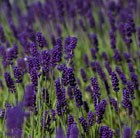
Lavandula angustifolia ‘Hidcote’ (lavender) £4.99
Position: full sun Soil: moderately fertile, well-drained soil Rate of growth: average Flowering period: July to September Hardiness: fully hardy A compact form of the popular English lavender, named after plantsman Laurence Johnston’s famous Arts and Crafts garden in Gloucestershire. It produces dense spikes of fragrant, deep violet summer flowers above slender, aromatic, silvery-grey leaves. It is possibly the best lavender for edging paths and borders and the aromatic foliage perfumes the air if you brush against it. It also works well in a gravel garden, or clipped into a formal sphere for a contemporary look. The flower-spikes are highly attractive to bees and other nectar-loving insects. Garden care: Cut back the stalks after the flowers have faded. Carefully trim back in April, taking care not to cut into old wood.
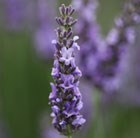
Lavandula x intermedia ‘Grosso’ (lavender) £4.99
Position: full sun Soil: moderately fertile, well-drained soil Rate of growth: vigorous Flowering period: July to August Hardiness: fully hardy This vigorous English lavender produces masses of slender spikes of vivid violet flowers between July and August, above grey-green leaves. It makes a gorgeous, flowering, informal hedge, especially along a path, where its fragrance can be appreciated. It works well in a Mediterranean garden, or clipped into a formal sphere for a contemporary look. The flower-spikes are also a magnet for bees and other nectar-loving insects. Garden care: Cut back the stalks after the flowers have faded to retain a compact shape. Carefully trim back in April, taking care not to cut into old wood.

Lavandula angustifolia Melissa Lilac (‘Dow4’) (PBR) (lavender) £4.99
Position: full sun Soil: moderately fertile, well-drained soil Rate of growth: average Flowering period: July to September Hardiness: fully hardy Stunning, large, violet-coloured, fragrant flower spikes appear in summer above slender, aromatic, silvery-grey leaves. This is a lovely lavender for edging paths and borders; the aromatic foliage perfumes the air if you brush against it. It also works well in a gravel garden, or clipped into a formal sphere for a contemporary look. The flower-spikes are highly attractive to bees and other beneficial insects. Garden care: Cut back the stalks after the flowers have faded. Carefully trim back in April, taking care not to cut into old wood.
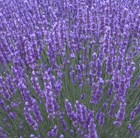
Lavandula angustifolia ‘Munstead’ (lavender) £4.99
Position: full sun Soil: moderately fertile, well-drained soil Rate of growth: average Flowering period: July to September Hardiness: fully hardy A compact lavender, named after Gertrude Jekyll’s garden at Munstead Wood. It produces dense spikes of fragrant, bluish-purple summer flowers above slender, aromatic, grey-green leaves. This is a lovely lavender for edging paths and borders; the aromatic foliage perfumes the air if you brush against it. It also works well in a gravel garden, or clipped into a formal sphere for a contemporary look. The flower-spikes are highly attractive to bees and other nectar-loving insects. Garden care: Cut back the stalks after the flowers have faded. Carefully trim back in April, taking care not to cut into old wood.
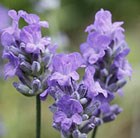
Lavandula angustifolia ‘Blue Cushion’ (Lavender) £4.99
Position: full sun Soil: moderately fertile, well-drained soil Rate of growth: average Flowering period: July to September Hardiness: fully hardy Blue-green foliage forms compact, cushion-like mounds that are topped with a profusion of upright flowerspikes for several months from midsummer. The rich blue flowers are extremely attractive to bees and butterflies, make pretty additions to posies and can be dried for pot pourri. Useful for creating a low hedge, providing year-round interest in a mixed border or potting up on a sunny patio. Similar to ‘Munstead’, but with a much more compact habit. Garden care: Cut back the stalks after the flowers have faded. Carefully trim back again in April, taking care not to cut into old wood.

Lavandula angustifolia ‘Elizabeth’ (lavender) £4.99
Position: full sun Soil: moderately fertile, well-drained soil Rate of growth: average Flowering period: July to September Hardiness: fully hardy A new variety, with dense spikes of shocking violet flowers in late summer that shine out among aromatic, silvery-grey leaves. It’s fairly compact, so makes a gorgeous, informal flowering hedge, especially for edging a path and border, and brushing against it releases its heady fragrance. The flower-spikes are highly attractive to bees and other beneficial insects. Garden care: Cut back the stalks after the flowers have faded to retain a compact shape. Carefully trim back in April, taking care not to cut into old wood.
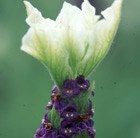
Lavandula ‘Tiara’ (French lavender) £5.49
Position: full sun Soil: moderately fertile, well-drained soil Rate of growth: average Flowering period: May to July Flower colour: blue with creamy-white flags Other features: highly aromatic flowers and leaves which can be used for making pot-pourri Hardiness: borderline hardy (may need protection in colder areas) Unusual spikes of large blue flowerheads topped with creamy-white flags throughout spring and summer, and aromatic silvery-grey leaves. An exciting new introduction to the French lavender range which has a compact yet upright habit, making it perfect for all gardens and in particular patio pots. As it’s borderline hardy it is best grown in a container in colder areas of the country and should be over-wintered in a cool greenhouse or conservatory. Garden care: Cut back the stalks after the flowers have faded. Avoid early spring pruning as flowers will be delayed. Keep dry during the winter
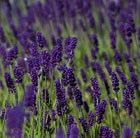
Lavandula angustifolia ‘Hidcote’ (lavender) £5.99
Position: full sun Soil: moderately fertile, well-drained soil Rate of growth: average Flowering period: July to September Hardiness: fully hardy A compact form of the popular English lavender, named after plantsman Laurence Johnston’s famous Arts and Crafts garden in Gloucestershire. It produces dense spikes of fragrant, deep violet summer flowers above slender, aromatic, silvery-grey leaves. It is possibly the best lavender for edging paths and borders and the aromatic foliage perfumes the air if you brush against it. It also works well in a gravel garden, or clipped into a formal sphere for a contemporary look. The flower-spikes are highly attractive to bees and other nectar-loving insects. Garden care: Cut back the stalks after the flowers have faded. Carefully trim back in April, taking care not to cut into old wood.

Lavandula angustifolia ‘Munstead’ (lavender) £7.99
Position: full sun Soil: moderately fertile, well-drained soil Rate of growth: average Flowering period: July to September Hardiness: fully hardy A compact lavender, named after Gertrude Jekyll’s garden at Munstead Wood. It produces dense spikes of fragrant, bluish-purple summer flowers above slender, aromatic, grey-green leaves. This is a lovely lavender for edging paths and borders; the aromatic foliage perfumes the air if you brush against it. It also works well in a gravel garden, or clipped into a formal sphere for a contemporary look. The flower-spikes are highly attractive to bees and other nectar-loving insects. Garden care: Cut back the stalks after the flowers have faded. Carefully trim back in April, taking care not to cut into old wood.

Lavandula ‘Willow Vale’ (lavender) £8.99
Position: full sun Soil: moderately fertile, well-drained soil Rate of growth: average Flowering period: June and July Flower colour: purple Other features: the aromatic flowers and leaves can be used for making pot-pourri Hardiness: fully hardy (borderline) This French lavender makes a stunning, informal flowering hedge for a sunny, protected site. In frost-prone areas it is best grown as a pot-plant and over-wintered indoors. It has crinkly edged foliage and lovely, long, pale lavender flags. Garden care: Cut back the stalks after the flowers have faded. Carefully trim back in April, taking care not to cut into old wood.






